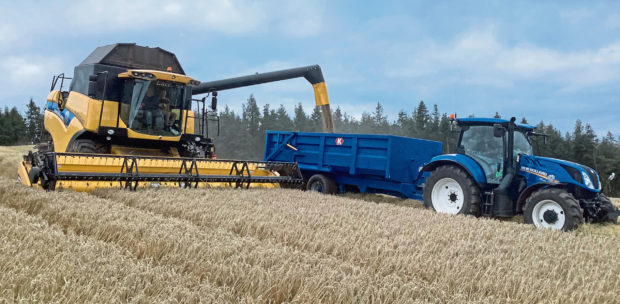Fears at sowing time that England’s exceptional 2020 spring barley acreage would pose a threat to the Scottish malting markets have proved to be groundless.
As combines continue to cut a swathe through harvest fields both north and south of the border, commentators are confirming that English yields and quality have failed to make an impact on Scotland’s traditional dominance of the malting barley market.
Frontier’s general manager in Scotland, Bruce Ferguson, said the English crop, which was sown in land that would traditionally be used for winter cereals, has had a low level of conformity for malting.
“It looked like a big crop on paper, but it hasn’t performed as malting barley, which was always going to be the potential,” he said.
“Winter cereals land is that for a reason, it doesn’t suit spring crops, and that’s what has materialised this year, whereas historically in Scotland we’ve grown malting barley as a primary crop.”
However, NFU Scotland’s cereals committee chairman Willie Thomson, who farms near Haddington, voiced concerns that the extra spring barley could swamp the feed market.
He said: “It’s not going to trouble our malting market but the oceans of feed barley could drag the price down there. It’s an unknown situation.”
However, with around 50% of this year’s harvest now safely in store – slightly more in central Scotland and less elsewhere – views are varying on the quality of spring barley which has seen issues with pre-germination and skinning in some parts of the country.
Bruce Ferguson said: “It would be wrong to say it’s all sailing in fine and well, but the majority is making the malting grade although there is variation out there.”
Mr Thomson added: “We’re a bit anxious about quality in the Borders and Berwickshire.
“There have been a few rejections for germination but nitrogens are OK.
“There’s still a lot to do but while we would all like to be finished early, the first week of September is traditional harvesting time.”
nnicolson@thecourier.co.uk










